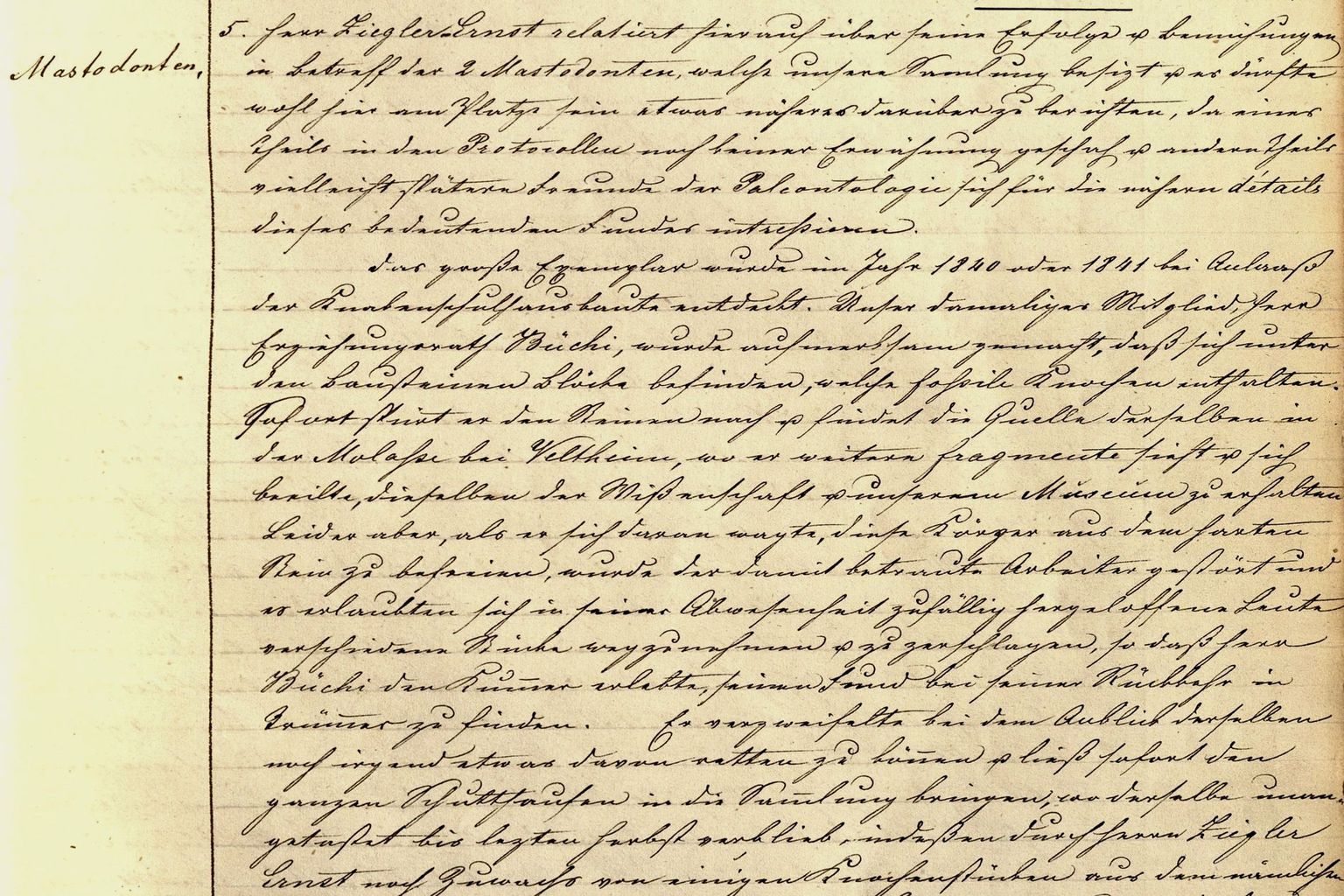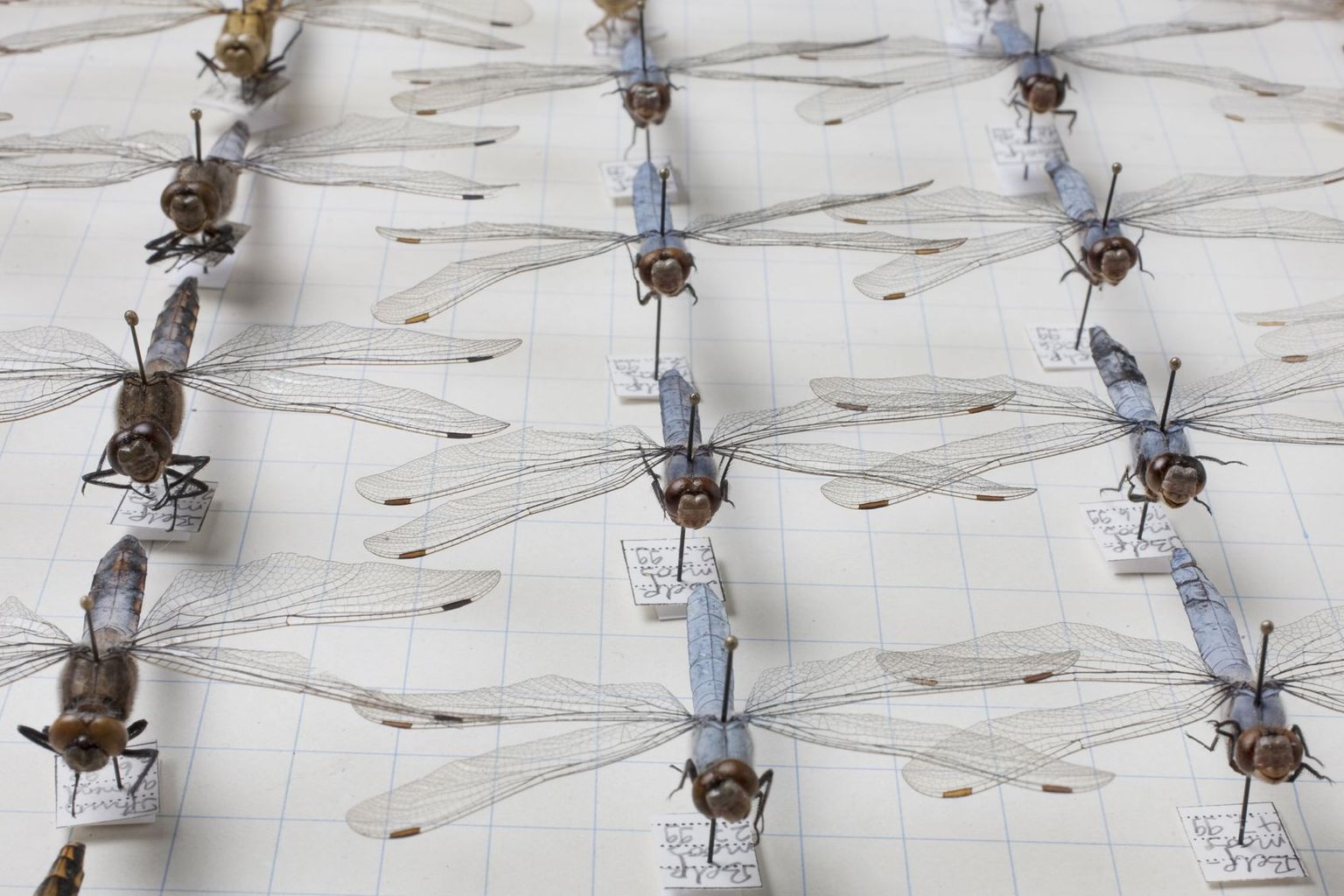- News
Une algue rouge qui transcende les générations
Image: Conservatoire et Jardin botaniques de Genève1/7- Press release
Die Schweiz hat plötzlich 200 neue Wespenarten
Image: Naturhistorisches Museum Basel2/7- News
À la recherche du spécimen disparu
Image: Jardins botaniques du Grand Nancy et de l'Université de Lorraine3/7- News
Das ertrunkene Schwein, das keines war
Image: Naturmuseum Winterthur4/7- News
Geteilte Freude zwischen Winterthur und Zürich
Image: Naturmuseum Winterthur5/7- News
Die Pfeifhasen vom Bodensee
Image: Naturmuseum Winterthur6/7- News
«Noch nie ein instructiveres Stück gefunden»
Image: Naturmuseum Winterthur7/7
The Swiss Academy of Sciences (SCNAT) and a large network of experts from museums, botanical gardens, institutions of higher education and partners have joined forces to launch SwissCollNet, the Swiss Natural History Collections Network.
With more than 60 million specimens of animals, plants, fungi, rocks, soil samples and fossils, Switzerland’s museums, universities, and botanical gardens store a remarkable scientific and patrimonial national treasure. However, less than one in five of these objects is digitized. This means that a large part of some unique data on biodiversity and the environment is not easily accessible for research, education and society.
Objectives
- Promote modern standards in management and curation of collections
- Modernise and digitise natural history collections
- Provide open access to harmonised specimen data of Swiss institutions through an online-portal, the Swiss Virtual Natural History Collection (SVNHC)
- Promote and support the scientific potential of collections for research
- Integrate the Swiss natural history collections into international initiatives
Contact
SCNAT
Swiss natural history collections network (SwissCollNet)
House of Academies
Laupenstrasse 7
3008 Bern
Switzerland
Stay informed
Une algue rouge qui transcende les générations
Poussés par le désir de rendre leur collection plus accessible, les Conservatoire et Jardin botaniques de Genève (CJBG) ont redécouvert une algue rouge datant de plus de deux siècles. Un saut dans le passé qui bénéficie également au présent et à l’avenir.
Image: Conservatoire et Jardin botaniques de Genève
Die Schweiz hat plötzlich 200 neue Wespenarten
Hierzulande leben viel mehr verschiedene Arten von Darwin-Wespen als lange angenommen, weil niemand sie bestimmen konnte. Ein Digitalisierungsprojekt und die Vermittlung von Fachwissen sollen Abhilfe schaffen.
Image: Naturhistorisches Museum Basel
À la recherche du spécimen disparu
C’est presque par miracle que le Musée d’histoire naturelle de Fribourg (MHNF) a retrouvé un spécimen de renoncule de Rion, bien loin de son lieu supposé.
Image: Jardins botaniques du Grand Nancy et de l'Université de Lorraine








